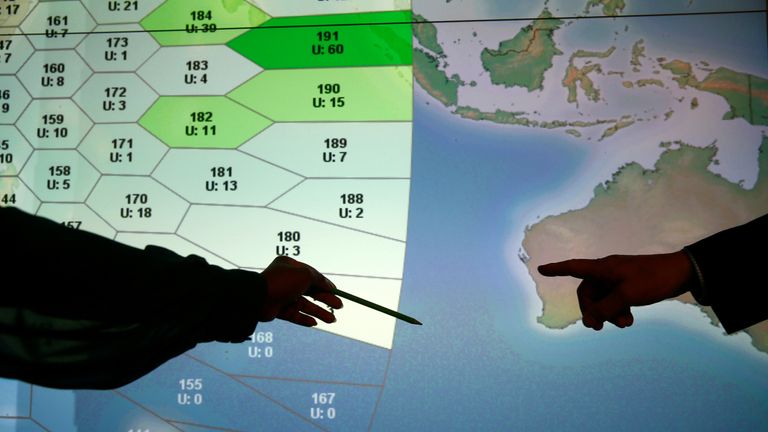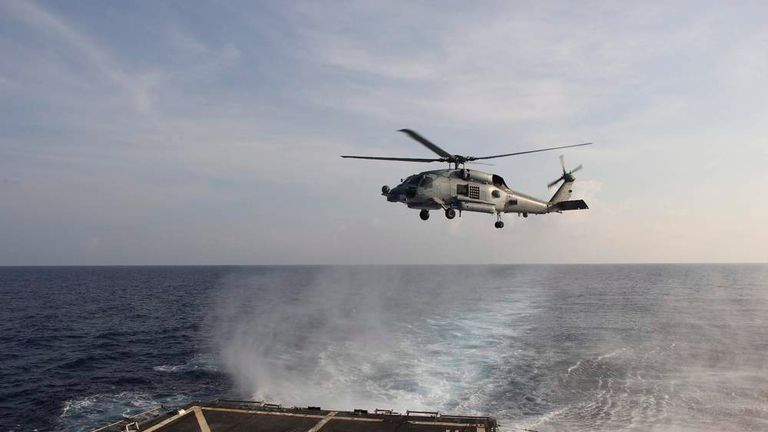MH370 crash site may be north of current search area, experts reveal
After a two-year search of a remote part of the ocean, MH370 investigators make a painful admission.
Tuesday 20 December 2016 23:16, UK
Search crews hunting for the missing plane MH370 may have been combing the wrong area of the Indian Ocean, it has been revealed.
Investigators involved in the AU$160m (£93m) hunt to find the vanished Boeing 777 made the painful admission after the release of an expert review of the search on Tuesday.
The plane vanished during a flight from Kuala Lumpur to Beijing in March 2014 with 239 people on board.
For the past two years a handful of ships have been combing a remote patch of the .
The new report from the Australian Transport Safety Bureau has been released after a meeting of international experts in November.
Specialists compared data from the plane's communications, along drift analysis of the more than 20 items of debris likely to have come from the plane, suggest the wreckage is likely further north.
Australian government oceanographer David Griffin, who worked on the analysis, said he is confident the plane is in the newly identified search area.
He also supported the current search saying it was not an error - but based on the best information available.
He said: "It could have been where we were searching, absolutely, but the new information does clarify that immediately north is more likely.
"They didn't go quite far enough away from the arc to cover all possibilities."
However, relatives of those on board could soon be devastated as the current deep-sea sonar hunt will end next month - and an extension further north is not likely.
Australian transport minister Darren Chester said since the report does not give a specific location of the plane, the information is unlikely to be acted on.
Malaysia, Australia and China agreed in July that the search will be suspended once the current effort is exhausted unless new evidence pinpoints the plane's exact location.
A deep-sea search of a 120,000-square-km (46,000-square-mile) stretch of water has so far come up empty.
The search is the most expensive ever mission to find a missing aircraft.




